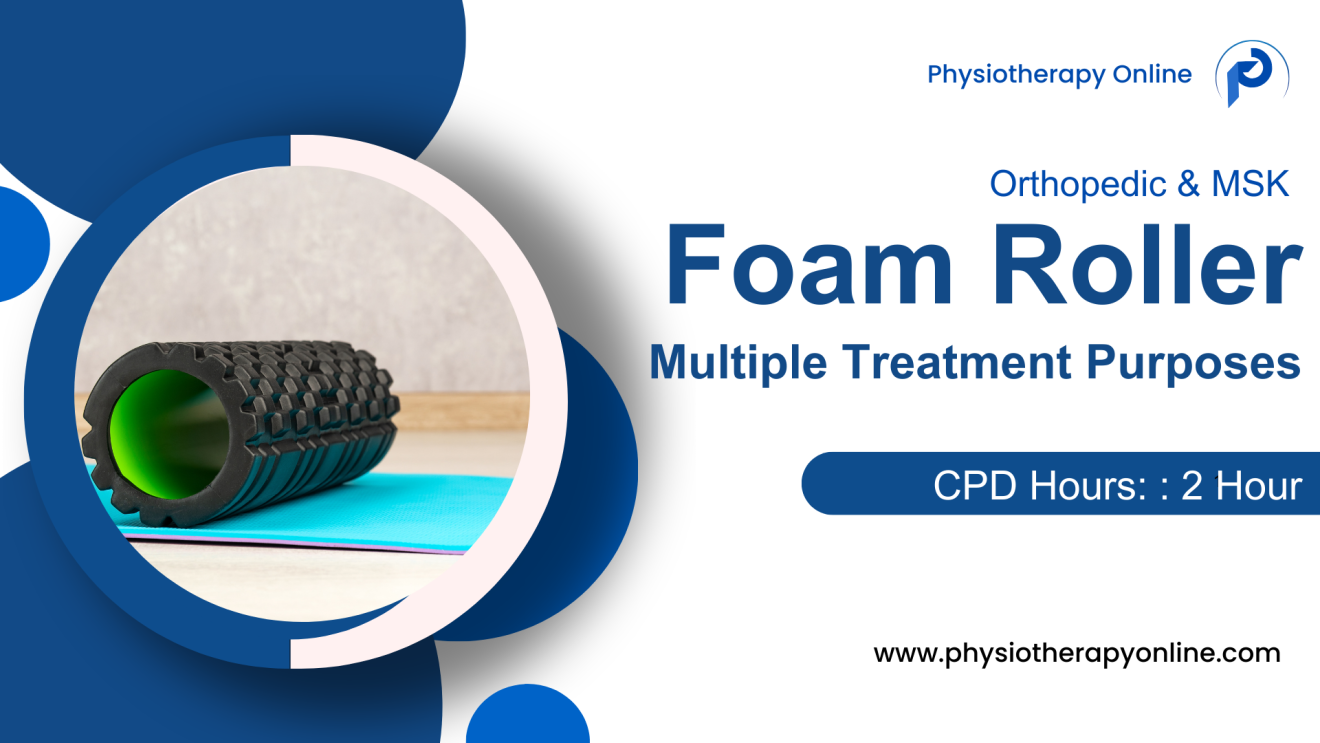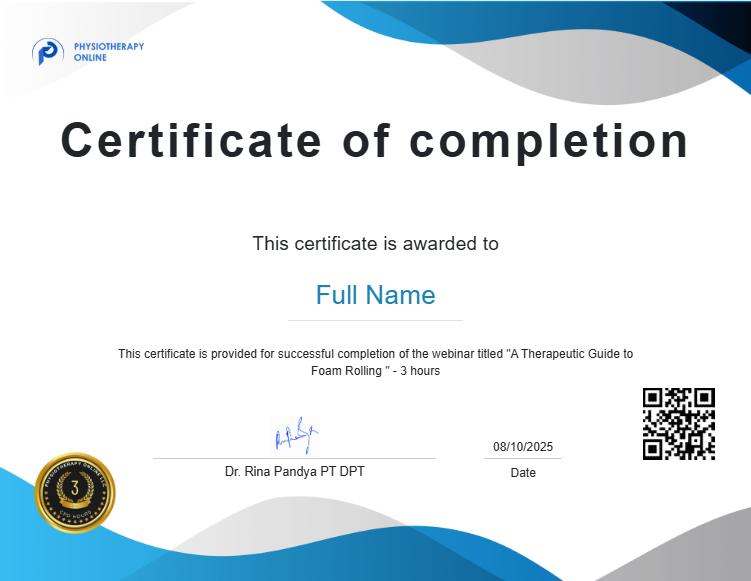About Course
A Therapeutic Guide to Foam Roller Aims to
- Explore the connection between the anatomy and physiology of muscle contraction and the myofascial and trigger points that can lead to pain. We will delve into the importance of understanding dysfunctional myofascial chains
- Understand how foam rolling can be an effective tool in addressing them.
- Review evidence-based research on foam rolling, including the types of rollers available, their functions, and the benefits of incorporating them into rehabilitation programs.
- The author will teach several techniques for foam rolling major muscle groups to improve muscle length and mobility, and address trigger points to add another effective tool to your toolbox for rehabilitation.
- By the end of this webinar, you will have gained valuable knowledge and skills to better serve your clients and patients in their journey towards improved health and wellness.
Learning objectives:
- Anatomy and Physiology and how foam rolling techniques can impact muscle function and performance.
- Understand the effects of foam rolling on myofascial and its connection to the autonomic nervous system, unlocking the potential for holistic approaches to wellness.
- Benefits: Benefits of foam rolling, include improvements in posture, pain management, and heightened body awareness, enabling participants to appreciate the full scope of its advantages.
- Practical Skill Development: Develop practical skills in foam rolling techniques for major muscle groups in both the upper and lower extremities. This hands-on training equips participants to apply foam rolling effectively in their practice.
- Clinical Application: Correlate specific foam rolling techniques to various diagnoses and conditions, providing a foundation for tailored therapeutic approaches that address individual patient needs.
Who Should Enroll
- Physiotherapist
- Occupational Therapist
- Athletics Trainer
- Sport Medicine Specialists
CPD Credit Hours
3 Hours
Resources
- 60 Days Access to Learning Resources
- Downloadable Course Material
- CPD Certificate
Disclaimer: Our online physiotherapy courses meet the criteria and guidelines for CPD (Continuing Professional Development). The CPD hours indicated on the certificate contribute towards fulfilling professional standards and requirements necessary for CPD audits conducted by the HCPC and AHPRA. These CPD hours are important for maintaining physiotherapy registration and ensuring compliance with CPD audit and Physiotherapy registration renewal processes. Our courses are recognized as valuable continuing education resources across the UK, Australia, New Zealand, and throughout Asia and the Middle East.
Course Presenter:
Dr. Rina’s physical therapy career spans over 23 years, through the UK, the USA and the Middle East. She has worked in Nationalized Healthcare Services, American health care and self pay services in acute care, in-patient rehab, skilled nursing facility, home healthcare and outpatient clinic. In addition to being a clinician she has developed specialty programs based on evidence-based practice in her role as a project manager. She has also managed the Physical Therapy department in the capacity of Head of Department in a premier private hospital in Oman. Rina is an internationally published webinar presenter; many of her courses are highlighted on Physiopedia/ Physio Plus. Her pocket books are now available on Amazon titled-- Orthopedic Assessments made easy Dr. Pandya graduated from Manipal University, India in 2000 as well as University of Michigan, in 2018 with a Doctor of Physical Therapy. Rina conducts live webinars and is part of the continuing professional development teaching community with courses published in the UK, US, South Africa, Ireland and Australia. Rina is a member of APTA, HCPC-UK and OAP-Oman.


